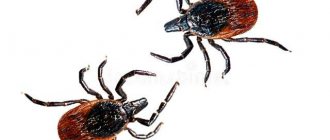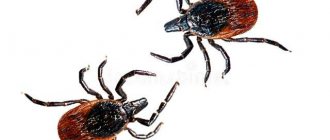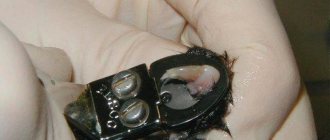The list of household and garden plants dangerous to animals is very long. Some of them are toxic, others are poisonous, and some are even deadly. And among this large list, the lily stands out separately.
Lilies of the species Lilium (true lily) and Hemerocallis (daylily) cause kidney failure in cats. Cats are the only animal species in which lilies cause kidney damage. The first report of such effects was made in 1992. Research and clinical data have shown that these plants do not cause nephrotoxicity in dogs, rats or rabbits.
Most cases of cat poisoning occur in the home due to flowers in bouquets.
Nephrotoxicity of lily for cats
There are many different types of plants called "lilies": Easter lily, lily lily, Asiatic lily, tiger lily, peace lily, calla lily and lily of the valley, among others.
And while they may be beautiful to look at, a cat can die from kidney failure if it eats any part of these toxic species and does not receive immediate treatment.
In fact, just two leaves can make your cat sick and, if left untreated, can become fatal in just three days.
Dangerous types of lilies
It is important to know that many plants have the word "lily" in their name, and they have varying toxic effects on cats. The most dangerous are:
- Hemerocallis species (Daylily, or Red Daylily)
- Lilium x asiatica (Asiatic lily)
- Lilium x asiatica americana
- Lilium candidum (Snow white lily, or pure white lily, or white lily)
- Lilium hydridum (Hybrid lily)
- Lilium lancifolium (Lilium tigrinum)
- Lilium longiforum (Lily Longiflorum)
- Lilium orientalis (oriental lily hybrids)
- Lilium regale (Regal lily, or royal lily, or Tibetan lily, or regale lily, or Chinese lily)
- Lilium speciosum (Lily beautiful, or beautiful lily)
- Lilium rubrum (Lily Rubrum)
- Lilium umbellatum
These types of lilies cause kidney damage in cats. All parts of the plant are toxic, and even a small amount of the plant, sap, or pollen can have serious consequences. Also dangerous is pollen that gets on the cat's fur and the water in which the flowers stand.
The main reason
When determining the toxicity of a lily you want or have, always look at the plant's scientific name. The scientific name consists of two parts: the “name” with a capital letter is the genus; “second name” is a species, it is not capitalized.
You may see additional names after the first and second; these are subdivisions of the species and are not important for determining toxicity. The second name is sometimes abbreviated sp. or species This means that the actual species has not been identified.
Sometimes the name is shortened, usually using only the first letter of the name. This is usually done when there is a list of several species of the same genus.
Of greatest concern are lilies in the genus Lilium (Lilium sp.), which includes Easter lilies, tiger lilies, and Asiatic lilies, as well as any of the genus Hemerocallis (Hemerocallis sp.), including lily lilies.
Cat treatment
Intoxication of the body and liver damage occurs within 1.5-3 days. Considering that a cat’s metabolism is very fast, the first signs appear within a few hours, but a pet can feel ill within an hour and a half. And if you don’t start cleaning your cat on time, the animal may die. Doctors at VK VetDoctor recommend that at the first symptoms of poisoning, especially if it is not possible to immediately take the animal to the clinic, take the following measures:
- Perform gastric lavage. This procedure is carried out using a syringe, removing the needle from it, and introducing about 20 ml of water into the cat’s oral cavity. After this, pressure is applied to the root of the tongue, which causes vomiting.
- It is advisable to give the cat a solution: 0.5 tablets of activated carbon + 5 ml of water to bind the toxic substances. Also administered using a syringe without a needle. If there is Enterosgel in the house, it is given to an animal weighing up to 4 kg, 2.5 g twice a day. “Smecta” is also suitable for this purpose - dilute 0.5 sachets with water, you need 50 ml of it, pour it down the throat at a time.
- To prevent dehydration, the cat is forced to drink at intervals of 15 minutes, pouring about 5 ml of water into the mouth.
If the animal is in a veterinary clinic, then all the necessary medications are administered intravenously.
In a clinical setting, the animal is given an antidote, antibiotics and vitamins intravenously to support the body. If anuria occurs - the inability to urinate due to acute renal failure, the cat undergoes a peritoneal dialysis session. However, the forecasts are not always favorable. Contacting a veterinarian as soon as possible and at the first alarming symptoms will help owners save their pet.
Treatment of cat poisoning with lilies
If your cat has only recently ingested plant material and has not yet vomited, your veterinarian will try to induce vomiting.
Activated charcoal will be administered orally to absorb any toxin that may remain in the intestines. The key to survival is to give plenty of intravenous (IV) fluids to try to prevent dehydration and kidney shutdown.
Fluids will be given for 1-2 days while monitoring your cat's kidney health as well as urine output. Lack of urine is a sign that treatment has failed.
Symptoms of poisoning
Cats by nature are both suspicious and curious. It is unknown why they are attracted to flowers and what prompts them to taste the petals, apparently they love to try everything. In order for toxins to enter the cat's body, it is necessary to eat the source of the poison - lily petals. They can cause a strong nephrotoxic effect in an animal if it enters the gastrointestinal tract.
Organ damage can also be caused by pollen particles in the stamens of a flower and the smell of lilies.
Symptomatic signs of intoxication if a cat has eaten a lily:
- foaming from the mouth;
- nausea and vomiting;
- depression;
- refusal of food;
- increased salivation;
- frequent urination;
- dehydration with increased desire to drink;
- lack of coordination;
- frequent seizures.
Diagnostics
You should not make diagnoses yourself, as the likelihood of error is quite high.
Even if the owner saw that his pet was gnawing on lilies, the diagnosis still needs to be entrusted to a specialist. Therefore, it is recommended that at the first signs of poisoning, take your pet to a veterinary clinic so that specialists can conduct a series of tests based on which they can give him the correct diagnosis.
What kind of research, besides a general examination of the animal, may be needed if a cat is suspected of being poisoned by lily toxins?
- General blood analysis.
- General urine analysis.
- Biochemistry of blood.
- Ultrasound of internal organs.
Important!
Before making a correct diagnosis, you should under no circumstances begin to treat your pet on your own. In the same case, if a trip to the clinic is temporarily impossible for one reason or another, it is permissible to provide first aid to the cat without resorting to the use of medications other than sorbents, such as activated carbon.
Care
The sooner you bring your cat in for treatment, the better her chance of survival. In the early stages, your veterinarian may perform a procedure known as decontamination. Your cat will be given a thick oral liquid that binds toxins and removes them from the body through the gastrointestinal tract. Aggressive fluid resuscitation started within 24 hours of ingestion may prevent anuric renal failure, where the kidneys fail to produce urine. 3 In more severe cases, dialysis is the only effective treatment. Be prepared for your cat to be hospitalized for several days.
How to prevent cat poisoning?
If the pet is in a summer cottage, then such plants cannot be planted there.
Whenever possible, you need to keep an eye on your pet and not bring home flowers of the lily family. If you have garden plots, you should not plant plants on them that are poisonous to cats. If you notice that your cat is eating flower petals, it is recommended to isolate him. Pets can also be poisoned by substances in the house:
- household chemicals (washing powders and detergents);
- medications for people that they don't always hide;
- automotive chemicals (antifreeze causes the same consequences as lily poisoning);
- cosmetical tools;
- some dessert people food products.
All potential drugs that can provoke intoxication in a pet must be kept in an inaccessible place; they are hidden not only from children. It is necessary to monitor the behavior of the pet; unusual behavior or refusal to eat should alert the owners and prompt them to consult a doctor. If an animal has been poisoned by lilies, the sooner the cat’s owners visit the veterinarian, the more favorable the prognosis for its survival.
Signs of intoxication
If a cat eats even a small piece of the plant, it will experience the following symptoms:
- Lethargy.
- Loss of appetite.
- Attacks of vomiting.
- Tremor.
- Dehydration.
- Convulsive seizures.
Early signs of poisoning may appear within two hours after eating the flower.
If the cat has lost its appetite, looks lethargic, or is vomiting, the owners need to see if the lilies are damaged. Soon after the first signs appear, the animal experiences seizures and tremors. If a cat has eaten a large amount of the plant, its kidneys will suffer greatly as a result of dehydration. This can be fatal. Lily of the valley does not affect the kidneys, but the heart. This poses no less a threat to your pet. If the owner suspects that the cat has been poisoned by a lily, he needs to take the animal to the veterinarian as quickly as possible. It is better to determine in advance how much and what type of plant the cat consumed. Then it will be easier for the specialist to choose effective treatment.
Poisoning due to ingestion of poison
Cats are usually very picky eaters. However, sometimes it happens that a cat can ingest a harmful or poisonous substance - for example, by licking itself after flea treatment, or by tasting a dangerous plant. There are poisons, the consequences of poisoning from which may not be very noticeable at first.
Long-term feeding of fish such as silver hake and pollock is dangerous for cats, as it leads to the development of iron deficiency anemia (these fish contain substances that interfere with the absorption of iron). Fish such as sardines, capelin, herring, sprat contain the enzyme thiaminase, which destroys vitamin B1, which leads to exhaustion, muscle weakness and disorders of the central nervous system. Such fish should be thoroughly boiled and its quantity should be limited.
Severe poisoning (for example, from unsafe food products containing botulinum toxin) can lead to rapid death.
Symptoms: general weakness, drooling, lethargy, vomiting, diarrhea, dilation, or vice versa - constriction of the pupils, convulsions, shortness of breath or increased breathing, respiratory arrest, often allergic reactions.
In all cases, if there are signs of food poisoning, you should contact your veterinarian as soon as possible.
First aid, as with all acute poisonings, consists of inducing vomiting as quickly as possible and removing unabsorbed poison (removal of absorbed poison and restoration of body functions is carried out in a veterinary clinic). For botulinum toxin poisoning, a specific serum is effective. Inject Gamavit subcutaneously 4–5 times a day.
If your cat has swallowed any chemical solvent, acid or alkali, do not induce vomiting under any circumstances, but contact your veterinarian immediately.
First aid consists of neutralizing the poison with acid (citric acid, apple cider vinegar if the cat has swallowed alkali), or soda (lye, egg white, olive oil) if the cat has been poisoned by acid.
In other cases of ingestion of poison, you should induce vomiting, but keep in mind that vomiting only helps if the poison was swallowed no more than 1-2 hours ago. If poisoning occurs earlier, you should rinse your intestines as quickly as possible. To wash the intestines, you can use a regular enema with cool water, potassium permanganate or a weak solution of baking soda.
Cat owners! Remember: in case of poisoning with organochlorine pesticides, animals should never be given vegetable oils, fats and milk, as they promote the absorption of the poison.
Severe poisoning can lead to rapid death.
Recovery
When first aid has been provided to the cat and his condition has stabilized and does not cause concern, he is allowed to be taken home. With severe consequences of intoxication, animals remain in the inpatient department longer. Before discharge, the doctor talks with the owners about care, feeding and treatment at home. Prescribes medications for home treatment. For at least 3 months after poisoning, cats are prescribed a dietary diet, so they are fed food intended for sensitive digestion. It is recommended to visit a veterinarian regularly to monitor the animal's condition.
Conclusion
To prevent a cat from being poisoned by lilies, you must follow simple rules: do not place bouquets of these flowers in the room where the animal is, and outside the city or in a private house, do not allow your pet to approach the flowers, smell them, or, when lilies are in bloom, Moreover, chew them.
If an accident happens and the cat does eat lilies, then it is necessary to take him to the clinic as soon as possible or immediately begin providing first aid to the pet if for some reason a trip to the doctor is impossible.
Lilies and Toxicity in Cats – Tips for Pets – 2022
The beautiful lily is one of the most commonly used flowers in floral arrangements, and they are also popular as potted plants to make an attractive addition to the home.
Unfortunately, however, if your home is also home to a cat, you should know that lilies are also extremely poisonous to our feline companions, and you should not leave lilies of any type inside the house if at all possible.
If it comes as a surprise to you that lilies can poison cats and you're wondering about the risks involved and how to keep your cat safe, read on to learn more about lily poisoning in cats, how to identify symptoms and how to prevent this.
What effect does lilies have on cats?
Like many plants, lilies are simply not suitable for feline consumption. The entire lily plant is toxic to cats; which includes pollen, leaves, roots, petals and everything else, which means cut lilies in vases and growing lilies in pots are equally dangerous.
Once a cat ingests lilies, either intentionally or unintentionally, the toxin present in the plant is absorbed by the buds, which ultimately, if left untreated, causes fatal or permanent kidney damage and severe pain and illness.
What types of lilies are poisonous to cats?
As far as we currently know, all types and varieties of lilies can potentially be poisonous to cats and in every format they come in - cut, dried or potted. Some of the most commonly found types of lilies that are known to be poisonous to cats include:
- Easter lily
- Tiger Lily
- Japanese show lily
- Ruby lily
- Day lily
- Some other members of the Liliaceae flower family
Many other varieties of lesser-known lilies are also toxic to cats, so it's safe to assume that any variety of lilies could potentially be harmful to your cat.
Looking for free pet advice? Click here to join the UKs favorite pet community - PetForums.co.uk
How do cats come into contact with lilies?
Cats will sometimes intentionally eat or bite lily leaves or flowers, although this is relatively rare. Kittens are likely to eat or bite flowers of any type as they explore the world around them.
But the most common risk for cats from eating lilies comes from the lily's pollen.
Lilies tend to drop a significant amount of pollen, which can easily be picked up on your cat's paws or rubbed onto a coat, then ingested when your cat washes and sits down.
Symptoms of lily poisoning in cats
Only a very small amount of pollen or one small leaf or petal is needed to make your cat sick quite quickly. After ingestion, symptoms begin to appear within a few hours or even within half an hour in some cases.
Be aware of these early symptoms that will begin to develop in just a few hours:
- Nausea and vomiting
- Lethargy and disinterest in what is happening around them
- Lack of appetite
As the poisoning progresses, it will begin to affect the kidneys, leading to localized pain in that area and general illness and unhappiness. If left untreated, it can lead to kidney failure and painful death.
If you know or suspect that your cat has been exposed to lilies, even a small amount, don't wait to see if symptoms develop.
Call your vet as a matter of urgency and be prepared to take them to surgery immediately.
Time is of the essence here, as your veterinarian may want to induce vomiting in your cat to remove any remaining lily in the stomach and help minimize the amount your cat ingests.
Treatment of lily poisoning in cats
If you are able to get your cat to the vet quickly, your veterinary surgeon may be able to give your cat a compound to encourage them to vomit any remaining portion of the lily in their stomach or consume the remainder.
If treatment for lily consumption is started within four to six hours of eating it, the cat will have a good chance of eventually recovering, so time is of the essence to try to prevent kidney damage and possible kidney failure.
Your cat will require hospitalization and close monitoring for at least 72 hours after ingestion to watch for signs of kidney failure and respond to any problems that arise.
Your cat may be placed on IV fluid therapy to keep them hydrated and also potentially given medications to control nausea and vomiting.
This is not a type of treatment that can be administered at home, and veterinary supervision is necessary to address any problems that arise along the way.
Keeping lilies away from cats
There's really no foolproof way to keep lilies in a home that contains cats, even if you have a room that is outside the cat's boundaries or a shelf that your cat can't reach. Lilies cast significant amounts of pollen, and so lily pollen can be found on the ground and furniture under high shelves, and is also tracked throughout the home by people and other pets.
The best way to prevent your cat from coming into contact with lilies is that you do not allow lilies to be brought into your home.
Source: https://rus.battlepetsonline.com/lilies-toxicity-cats-52822
Rehabilitation process
After providing pediatric assistance and carrying out the necessary procedures, owners are usually allowed to take the poisoned pet home.
The only exceptions to this rule are extremely severe cases of intoxication, when the animal must constantly be under IV drips or dialysis. Then he will be kept in a hospital until his general condition stabilizes.
In any case, after bringing the sufferer home, cat owners need to follow all the doctor’s recommendations, including how, what and how many times a day to feed, what medications to give, and how often to go to the clinic to monitor the pet’s condition.
Important!
In the event that IVs were prescribed, but the cat was not left in the hospital, the owners will have to take him to the clinic for procedures at the appointed time. Violation of this regime is completely unacceptable, since at the slightest deviation from following the doctor’s recommendations, the cat may develop severe complications caused by damage to the kidney tissue.
Lily poisoning is considered very dangerous for cats, but the likelihood of developing serious complications depends to a large extent on the individual characteristics of the animal. Some cats are more susceptible to lily toxins, others less so. Some of the purrs recover after minimal therapy and do not experience any consequences of poisoning in the future.
Others need weeks of dialysis to allow their kidney tissue to begin to recover. However, in many pets, unfortunately, the kidneys do not begin to function normally despite all the measures taken and they die within a few days after their fateful “acquaintance” with flowers.











